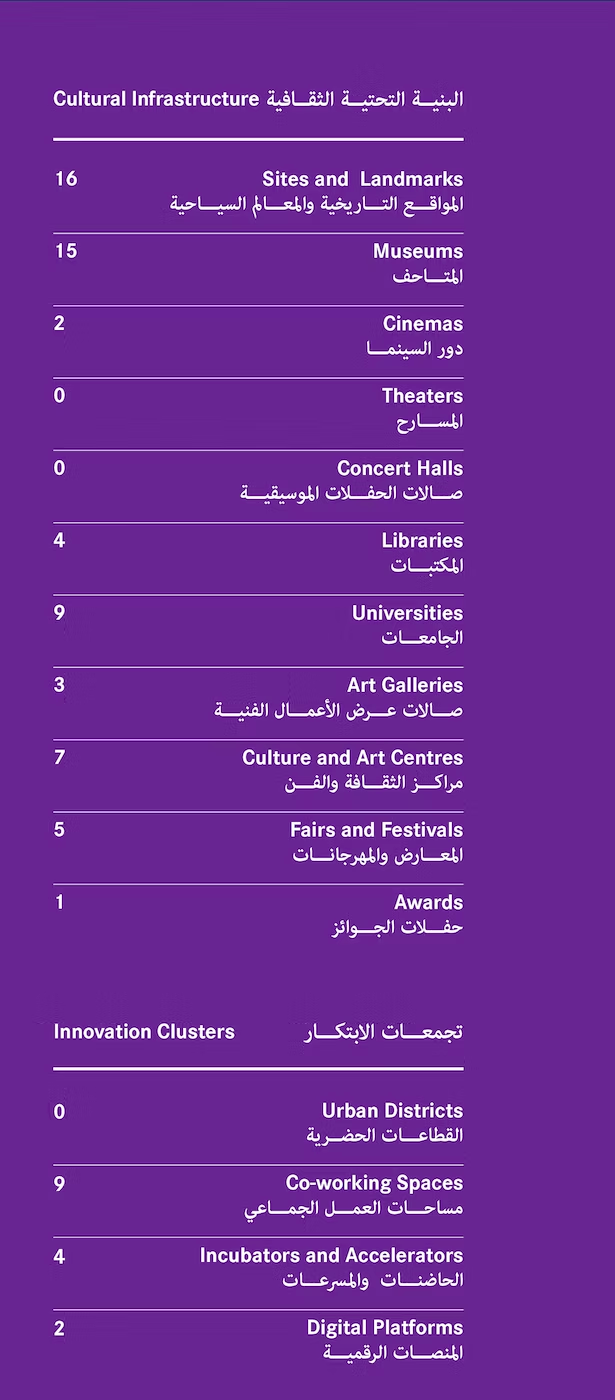Riyadh, A Cultural Transformation.
- Wakim Zeidan
- Aug 7, 2023
- 3 min read


Although Riyadh is a modern city home to about 7.7 million people143, over the past few centuries it underwent a rapid transformation, developing from a small fortified desert village that dates back to the 17th century to an urban city. As the capital of Saudi Arabia, Riyadh hosts a variation of historical landmarks that were built over the years to protect the city from foreign powers, as well as serve as home to the ruling family, Al Saud. While the city has a rich history, it wasn’t until recently that there was a push to enhance the cultural landscape. In 2018, the government announced that it would invest $64 billion144 to develop and grow the cultural infrastructure, as a part of Vision 2030. The main factor that has contributed to the cultural vibrancy of Riyadh is the contrast between the city’s preservation of its history, hand in hand with the country’s forward-looking vision for 2030.
The capital of Saudi Arabia, Riyadh, is home to a total of 62 cultural infrastructure points. Al Diriyah, one of the 16 “sites and landmarks”, was founded in 1466 CE and was the original home of the Saudi royal family145. Al Turaif District is housed within Al Diriyah, which is known as one of the largest clay cities worldwide and in 2010 it was named a World Heritage Site by UNESCO146. A more recent “site and landmark”, Al Faisaliah Tower was completed in 2000147 and stands out clearly amongst the city’s skyline, further illustrating the relationship between the past and the future of Riyadh’s cultural landscape. There are 15 “museums” in Riyadh, while some of which were built to celebrate the city’s heritage and culture, others were royal palaces that were transformed into “museums”. Al Masmak fort, built in 1902148, was a prominent fort that was transformed into a museum and now offers a 3D virtual tour of the Kingdom. Furthermore, King Abdul Aziz Historical Centre, one of the seven “culture and art centers”, shares the same location as the Murabba Palace, which was built by King Abdalaziz in 1937149. The Masmak fort and the King Abdul Aziz Historical Centre are accurate depictions of how the city is building on its old cultural infrastructure and using innovation to tell the story of its past to bolster the city’s cultural vibrancy.

When Vision 2030 was announced in 2016, it gave more of an importance to the cultural landscape considering one of the pillars of the vision is to create a vibrant society by promoting culture and entertainment150. There are two “cinemas” in Riyadh, both of which opened after Vision 2030 was set. One of the seven “culture and art centers”, Misk Art Institute, was founded by Crown Prince Mohammed Bin Salman in 2017 “to encourage grassroots artistic production in Saudi Arabia, nurture the appreciation of Saudi and Arab art and enable international cultural diplomacy and exchange.”151 These new initiatives are an addition to the city’s already existing cultural landscape, further illustrating the effect Vision 2030 played in enhancing the cultural vibrancy of Riyadh.
With regards to the innovation clusters, Riyadh has a total of 15. Part of Vision 2030 is to increase employment, which the Kingdom aims to do by nurturing and supporting an innovative and entrepreneurial culture that will lead to job creation through SMEs and micro-enterprises152. One of the four “incubators and accelerators” in Riyadh, Monshaat, was established in 2016 “to increase the productivity of these enterprises and increase their contribution to the GDP from 20 to 35 [percent] by 2030,”153 which is in line with the goal of Vision 2030. Transforming Riyadh’s historical cultural infrastructure to incorporate modern innovation, as well as enacting a forward-thinking plan, Vision 2030, the city’s cultural vibrancy is a combination of both the past and the future.

Researched and written by Yasmena AlMulla, Azza Elhassan, Juliette Zeidan & Wakim Zeidan
The research was concluded in December 2019
SOURCES & REFERENCES CAN BE FOUND IN THE FULL REPORT HERE


Comments